Apple iPad 2 GPU Performance Explored: PowerVR SGX543MP2 Benchmarked
by Anand Lal Shimpi on March 12, 2011 3:04 PM EST- Posted in
- Smartphones
- Apple
- iPad
- GLBenchmark
- iPad 2
- Mobile
- Tablets
GLBenchmark 2.0
GLBenchmark 2.0—as its name implies—tests OpenGL ES 2.0 performance on compatible devices. The suite includes two long benchmarking scenarios with a demanding combination of OpenGL ES 2.0 effects - texture based and direct lighting, bump, environment, and radiance mapping, soft shadows, vertex shader based skinning, level of detail support, multi-pass deferred rendering, noise textures, and ETC1 texture compression.
GLBenchmark 2.0 is the best example of an even remotely current 3D game running on this class of hardware—and even then this is a stretch. If you want an idea of how the PowerVR SGX 543MP2 stacks up to the competition however, GLBenchmark 2.0 is probably going to be our best bet (at least until we get Epic to finally release an Unreal Engine benchmark).
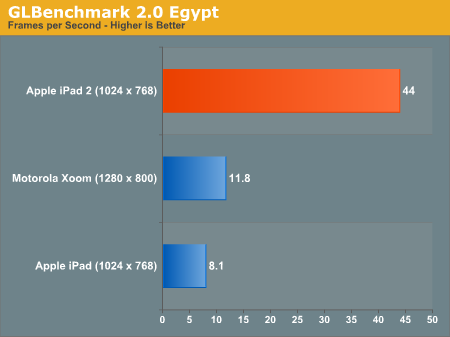
Without AA, the Egypt test runs at 5.4x the frame rate of the original iPad. It's even 3.7x the speed of the Tegra 2 in the Xoom running at 1280 x 800 (granted that's an iOS vs. Android comparison as well).
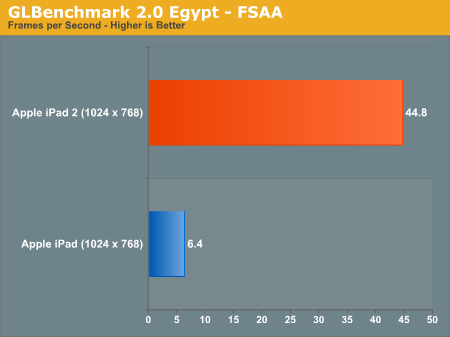
With AA enabled the iPad 2 advantage grows to 7x. In a game with the complexity of the Egypt test the original iPad wouldn't be remotely playable while the iPad 2 could run it smoothly.
The Pro test is a little more reasonable, showing a 3 - 4x increase in performance compared to the original iPad:
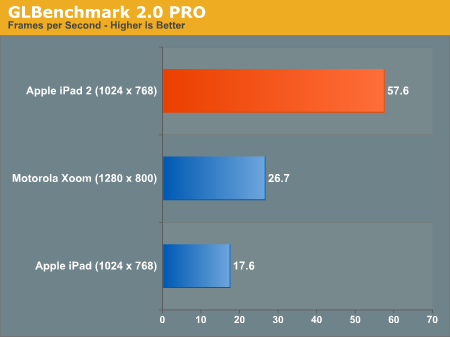
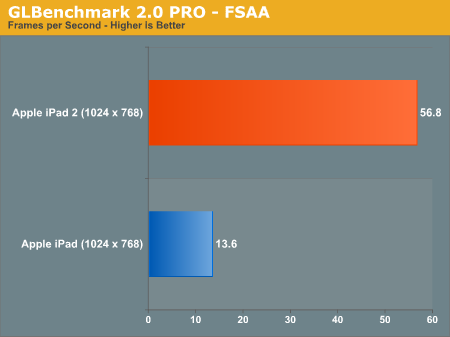
While we weren't able to reach the 9x figure claimed by Apple (I'm not sure that you'll ever see 9x running real game code), a range of 3 - 7x in GLBenchmark 2.0 is more reasonable. In practice I'd expect something less than 5x but that's nothing to complain about. We'll be doing power analysis over the weekend so expect more detail in our full review.
Putting the PowerVR SGX 543MP2 to Use: Infinity Blade
As we pointed out in our iPad 2 Preview, at least one developer already picked up on the amount of extra GPU horsepower in the new iPad 2. Epic put out an updated version of Infinity Blade with support for the iPad 2. Run it on an iPad and you'll get the same old Infinity Blade, but run it on an iPad 2 and you'll get more detail, higher resolution textures and anti-aliasing.
Remember that iPad and iPhone devices are more closed than your PC. There's no adjusting detail settings or resolution, so the target frame rate is usually what's fixed. Developers are simply able to deliver a better looking experience at roughly the same frame rate with upgraded hardware. In the case of Infinity Blade, load times are reduced thanks to the Cortex A9 CPU cores and there is some improvement in frame rate but the biggest impact comes from the improved visuals.
Below is the comparison beween Infinity Blade on the iPad and iPad 2 we ran in this morning's preview:
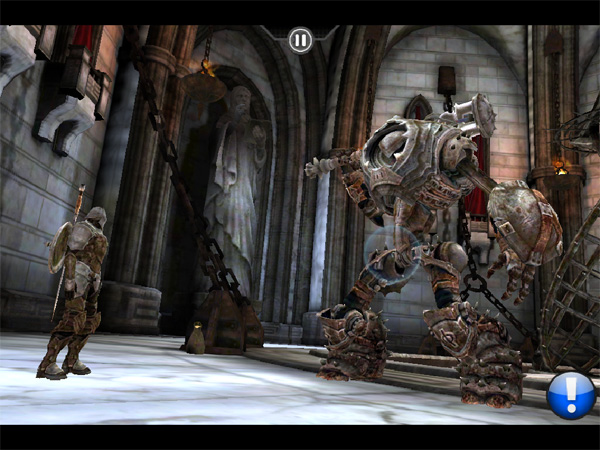
Mouse over to see Infinity Blade on the iPad 2
There's far more detail in the character models as well as the environment. Lighting looks improved and the AA is definitely appreciated.
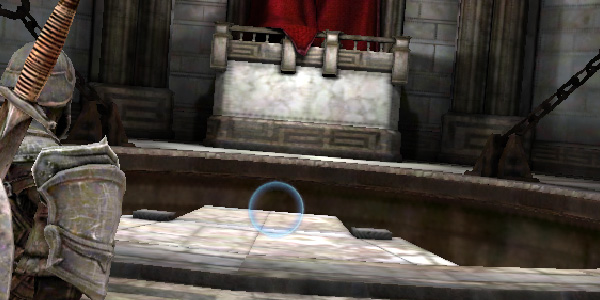
Mouse over to see Infinity Blade on the iPad 2
The gallery below has a bunch of side by side shots showing the improvements made to Infinity Blade for the iPad 2 vs. what you get when you run the game on a first generation iPad.
To Be Concluded...
We're still hard at work on our full iPad 2 review. We've got no less than four units running through battery life tests right now and there's still more to talk about in the review. We'll keep you posted, thanks for reading!


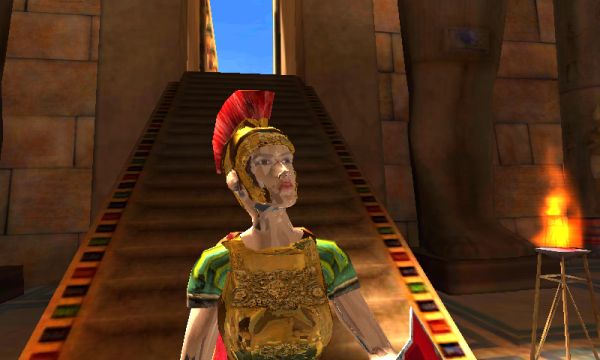














219 Comments
View All Comments
rish95 - Saturday, March 12, 2011 - link
Fanboy? I am stating a fact. Apple's throttling system is crazy. Its devices almost never run at max frequency.ncb1010 - Sunday, March 13, 2011 - link
The A5 in the iPad seems to run at 900 mhz.rish95 - Sunday, March 13, 2011 - link
No it doesn't. Run GeekBench 10 times closing it completely each time and you will get a 1000 MHz reading. I tried it.ncb1010 - Sunday, March 13, 2011 - link
So, geekbench detects an iPad and spits out 1 ghz? According to Anandtech, it is clocked at 900 mhz as it is slower than a 1 ghz dual core Cortex A9 in pure cpu tests. Regardless of the clock speed, it performs like it is clocked at 900 mhz.nafhan - Saturday, March 12, 2011 - link
Eh... there's more to the buying decision than hardware here. Generally incompatible software stacks and purchasing methods ensure that!Juzcallmeneo - Sunday, March 13, 2011 - link
I saw the same thing on two different sites..but am entirely too tired to remember where. They were benchmarks..that seemed to be only CPU, and the Tegra 2 was doing quite well. One thing we all need to keep in mind is that Honeycomb is beta and still needs to be optimized with the hardware. For instance, the Xoom performs much better than the other tegra 2 wielding devices that have already been benchmarked..why? (Atrix)StevenN - Sunday, March 13, 2011 - link
It is a fully shipping product that people pay full price for and is not Beta.geok1ng - Sunday, March 13, 2011 - link
Given that BOTH devices suffer the HUGE handicap of not running x86 code,And that BOTH devices operate based on online software stores, even my mistrust in anything Apple must concede that not only the iPad2 is a good product at a fair price point, but it wipes the floor with the competition's @$$#$.
CptTripps - Monday, March 14, 2011 - link
Tegra 2 is junk?People still seem to like their IPAD 1, which gets beat by the Xoom so... is the IPad now junk?
I need some casual gaming, web browsing and multimedia. I along with many others could give a shit how many fps it gets in the Egypt test.
ltcommanderdata - Saturday, March 12, 2011 - link
Isn't iPad marketshare in the last quarter something like 73%? In other words, the iPad is 4 times more popular than other tablets. In that context, devoting 4 times the attention to it is actually proportional.